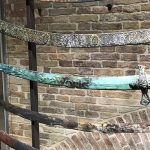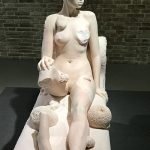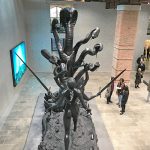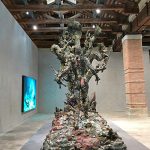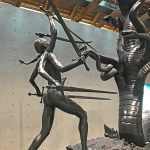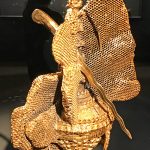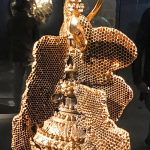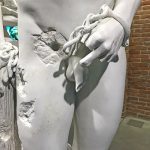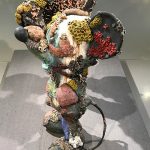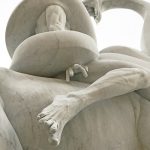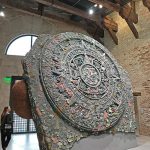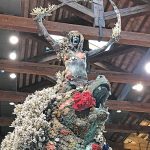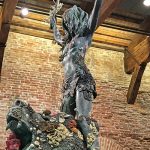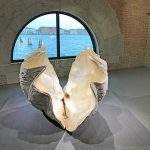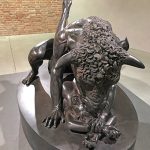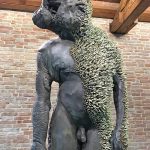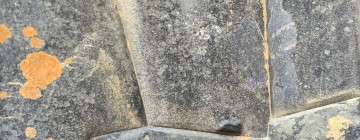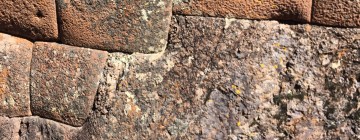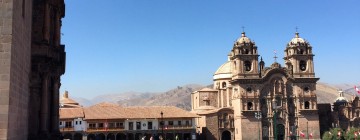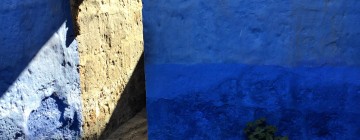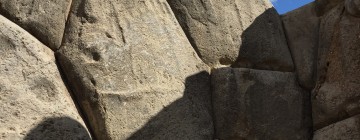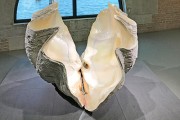
Archaeology of the Perverse: Damien Hirst at Punta della Dogana
by Rebecca Firestone with Mark English AIA | Editorials
Is “Treasures from the Wreck of the Unbelievable” really the most expensive artistic flop in living memory, or are these art critics missing the real point?
Image: Mark English Architects
When Mark English showed me his latest travel photos of Damien Hirst’s art show in Venice, I was fascinated not just by the preposterousness of the art itself, but also by the virulence of the art reviewers. Artnews said: “Disastrous … one of the worst exhibitions of contemporary art in the past decade … devoid of ideas…” Another publication, Hyperallergenic, called it “the most expensive artistic flop in living memory.”
Basically, the premise is that a freed 1st-century slave named Cif Amotan II (anagram: “I am Fiction”) had gained a fortune, amassed an incredible collection of art and artifacts, and then lost it all when his ship sank under the sea.
Mark’s rebuttal was brief and to the point. “I loved all the jokes. The man with the tip of his penis cut off, giving us the finger.”

Here’s a typical Hirst work from the show. Ostensible bronze antique, except she’s covered in dozens of types of coral – and is she wearing a bra? Image: Mark English Architects
- Antique swords from Sea World and early Persia, perhaps. Image: Mark English Architects
- This was one of the few marble sculptures, banged-up to look used. Even the coral is carved out of marble, a double-fake. How can you tell this statue’s a fake? “By her genitalia” said Mark. Real classical sculptures only show the male member, I guess. Image: Mark English Architects
- Underwater photo of the statues being “rescued”. Damien Hirst “Hydra and Kali”. Image: Mark English Architects
The critical reviews are both informative and bitingly entertaining, well worth reading. The Art news writeup made me think of a Hollywood movie director:
“Two bronzes of the Hindu goddess Kali fighting a giant hydra—and make them huge! Throw coral on one, and make a smaller version in silver! A giant Aztec-style calendar stone! A bunch of unicorn skulls—bronze, silver, and gold! Mickey Mouse covered in coral! Shiny clam shells in different sizes!”
The eclectic and seemingly random nature of the artifacts reminded me of Hearst Castle in California, located on the coast near San Luis Obispo. Early 20th century oligarch collects antiquities and architectural fragments, then hires architect Julia Morgan to cobble them all together into a giant mass of a building – dozens of buildings, actually.
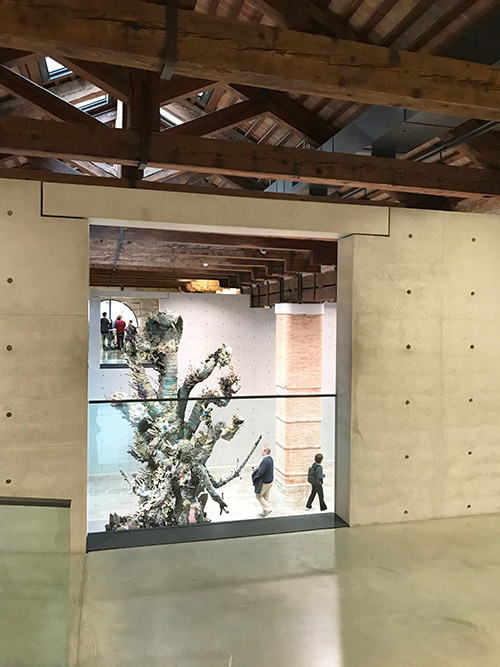
Hydra, seen through a wall opening. Definitely a Hollywood movie imagination. The ceiling shows the original 15th-century beams of the Italian warehouse at Punto della Dogana, with concrete renovations by architect Tadao Ando. Damien Hirst “Hydra and Kali”. Image: Mark English Architects
- The Hydra, again, a different casting without the coral. A naked warrior maiden with 6 arms and broadswords and a Hydra with what looks like 7 or 8 different species of snake. Excess! Damien Hirst, “Hydra and Kali”. Image: Mark English Architects
- Another view of the coral-studded Hydra. Damien Hirst, “Hydra and Kali”. Image: Mark English Architects
- Here you can see the warrior maiden’s arms more clearly. What are those objects on the base? They look like quartz crystals. Damien Hirst, “Hydra and Kali”. Image: Mark English Architects
Hirst’s depiction of Kali, originally an Indian deity, is inaccurate mythologically; in one of her best-known stories, Kali defeated Raktabija, a Hydra-like demon, by catching drops of its blood on her tongue before they hit the ground, where they’d spawn a new demon.
“ I quite enjoyed the show. It’s perverse, both in the subject matter and the amount of money spent. A lot of big art that’s popular, that’s really world-class, is perverse anyway – somebody finding an expression with an enormous payoff. And Hirst is still alive. Not like Picasso, whose works only exploded in value after his death, or Van Gogh, who was another late bloomer.”
“What’s the cutoff point when it becomes perverse, anyway? Is it $1M? Cutting a shark in half and covering it with resin? It’s pure savagery, really. Like rock and roll musicians burning their guitars onstage.”
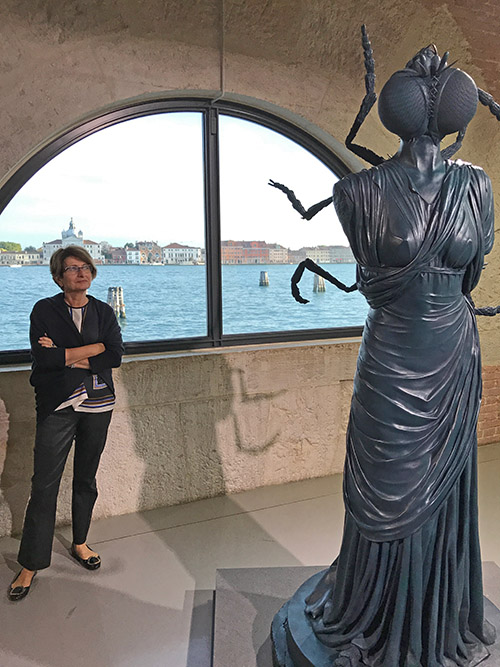
A Greek muse with drapery meets The Fly. What’s not to like? Damien Hirst, “Metamorphosis”. Image: Mark English Architects
- A gold-ish casting of a jeweled casket, with a kris knife, embedded in… honeycomb? Damien Hirst, “Crown in Petrified Honeycomb with Two Daggers”. Image: Mark English Architects
- The casket with honeycomb, other side. Damien Hirst, “Crown in Petrified Honeycomb with Two Daggers”. Image: Mark English Architects
- Another marble, a chained captive who’s lost his tip and appears to be expressing his disappointment. Image: Mark English Architects
It’s about creating a spectacle, I said. Rulers, plutocrats and oligarchs have been creating spectacle to demonstrate their power since the first Ur-king built a palace to impress the neighbors. The earliest human empires included monumental works, temples, sculptures, with live pageantry and elaborate court life as well. Popes and kings used the power of excess to cement their control and inspire awe, envy, and fear.
And yet, one of the primary objections of these art critics was the show’s crassness, and its obvious fakery, both of which were key components of the exhibition’s premise. Anyone who puts a statue of Mickey Mouse covered in coral is not pretending that it’s in any way authentic. Maybe it was just sour grapes.
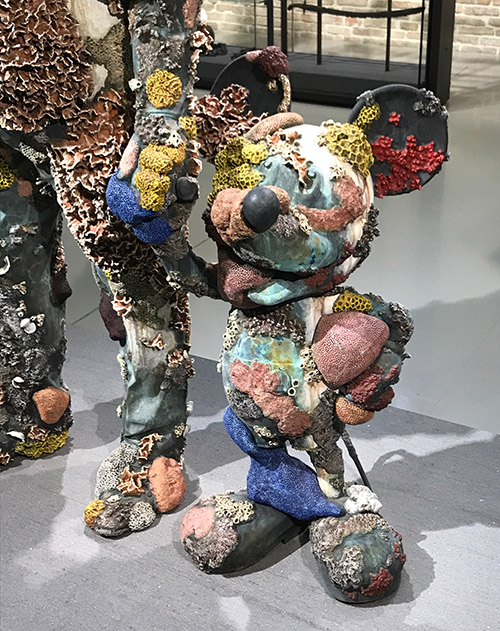
Mickey Mouse obviously time-traveled back to the 1st century. I wonder if Disney sued Hirst for copyright infringement. Damien Hirst, “The Collector with Friend”. Image: Mark English Architects
- Mickey Mouse from the side. Damien Hirst, “The Collector with Friend”. Image: Mark English Architects
- I think this is a hapless (naked) horseman being eaten by a giant serpent. “The marble carving is masterful” said Mark. Damien Hirst, “The Fate of a Banished Man (Standing)”. Image: Mark English Architects
- One piece that’s closer to authenticity of form is this Mesoamerican bronze disk. “There was still something wrong with it”, said Mark. I’ll have to take his word for it. Damien Hirst “Calendar Stone”. Image: Mark English Architects
“A lot of that moral judgment just didn’t enter my mind seeing the show. I’m not that interested in what art critics have to say. They’re not artists. They don’t do any art themselves. They live off of artists. The same is true with architecture critics, even the better ones sometimes.”
But a good critic can be like a good museum curator, I replied. They help to educate the public and help them appreciate and understand wha they are seeing. “The Art News critic wasn’t attempting to understand what Hirst was trying to do. Just about making money was his message, and isn’t that a terrible thing. Not discussing the premise of the work.”
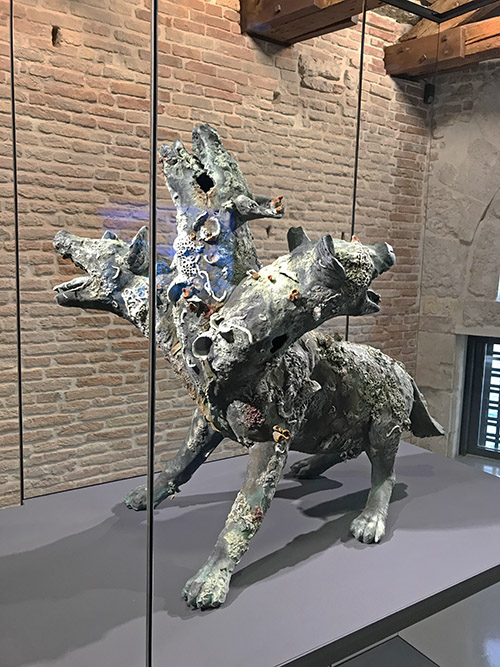
I identified this one as Cerberus, the 3-headed hound of Hades from Greek or Roman mythology. Image: Mark English Architects
- Another warrior maiden, astride a giant bear’s head, waving scimitars. I could see this as a video game, maybe Zombies from the Deep. Damien Hirst, “The Warrior and the Bear”. Image: Mark English Architects
- The scimitar-wielding warrior maiden is actually astride the bear’s shoulders. Damien Hirst, “The Warrior and the Bear”. Image: Mark English Architects
- And then there’s the giant clamshell. This one’s quite attractive, and a welcome relief after all the grotesque imagery in the rest of the show. Image: Mark English Architects
So what about this premise, anyway? “It’s an interesting pretense, about our fascination with history. We think of classical sculptures, Roman and Greek, as pure forms of white marble. Most people don’t know that those statues were painted. The Parthenon was polychrome, multicolor.”
“We misinterpret relics of the past and create a world that doesn’t really exist. Then someone like Hirst comes along and says ‘Hey, let’s really warp it.’ On a deeper level, he’s making a comment about how we fetishize in our minds the scattered relics of the past. We take relics that have survived by accident, or that have been selected by cultural curators, and we create an idea based on a limited and mistaken collection of artifacts.”
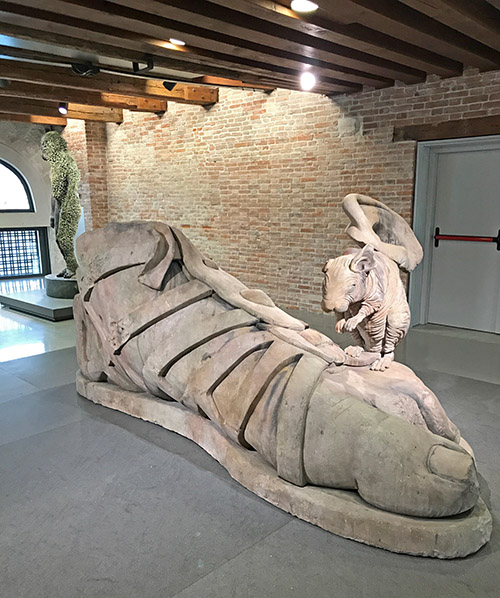
Ozymandias meets a wrinkled old mouse who could pass for a Chinese Taoist sage. Damien Hirst, “Remnants of Apollo”. Image: Mark English Architects
- A minotaur rapes a woman, or else they’re having a good time in a kinky sex dungeon, perhaps. Damien Hirst, “The Minotaur”. Image: Mark English Architects
- This one’s truly grotesque. A classical torso with an “Elephant Man” deformity, with coral. I wonder if they had “Eraserhead” in that exhibit somewhere? Apparently there were a huge number of these artworks, and Mark only photographed a few. Image: Mark English Architects
I thought of both Edward Said’s concept of Orientalism (a colonialist, exotic, fetishized Other) and a book by Sally Price from years ago, called Primitive Art in Civilized Places. The second book described in horrifying detail the process by which wealthy collectors basically robbed indigenous peoples of their most precious artifacts, purely so that the collectors could keep them in their own private collections and feel superior to their rival collectors.
Mark pointed out that the Renaissance wasn’t classical, even though to us it seems that way, now. “The Renaissance was a rediscovery of classical forms, but they misunderstood it too. They didn’t know what those sculptures meant to their creators. Michelangelo’s David wasn’t the same as the classical Greek versions.”
I truly regret not seeing this show myself, and even more, not being able to see it on psychedelic drugs.
Links and References for Further Study
Information on the building renovation and the building history:
Architect Magazine
Information on the exhibition, from the museum itself:
Downloadable PDF museum guide:
Kali mythology, and her defeat of Raktabija
Edward Said, Orientalism, 1978
Sally Price, Primitive Art in Civilized Places, originally published 1992
Reviews
Artnews, “A Disastrous Damien Hirst Show in Venice,” May 8th, 2017
Hypoallergenic, “Damien Hirst’s Shipwreck Fantasy Sinks in Venice”, August 10,2017

